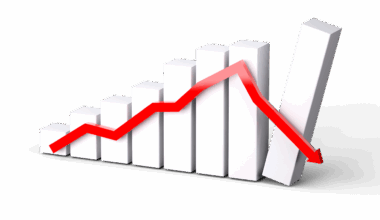Emergency Funds and Credit Card Debt: What You Need to Know
Understanding the balance between emergency funds and credit card debt is crucial for financial health. Emergency funds are essential savings that cover unexpected expenses, such as job loss or medical emergencies. They provide a safety net that helps avoid relying on credit cards, which can accrue high-interest charges. The typical rule suggests saving three to six months’ worth of living expenses in an accessible savings account. This will ensure you have a cushion during times of financial distress, allowing you not to fall into debt. Without an emergency fund, you may find yourself reaching for your credit card during an unexpected expense, leading to a cycle of debt that can be hard to break. Therefore, establishing solid emergency savings before tackling credit card debt is critical. Evaluating your expenses and setting aside money consistently can help you build this fund. Financial planners often recommend automating transfers to make saving seamless. By prioritizing your emergency savings, you can mitigate the stress that emergency situations bring while avoiding costly credit card debt that many often accumulate without realizing the long-term implications.
Credit cards can be a double-edged sword. While they offer convenience and can help build credit scores, mismanagement can lead to severe financial burdens. Breaking away from the cycle of credit card debt requires a strategic approach. Start by assessing your total credit card debt and the interest rates applicable to each card. With this information, you can develop a repayment plan that targets high-interest cards first. Additionally, consider the snowball method, where you pay off smaller debts first, giving you quick wins and motivation. Avoid accumulating new charges while you’re paying down the existing debt to maintain focus on your goals. Caring for your credit score is also vital; late payments can severely damage it. Simultaneously, try to contribute to your emergency fund, even if it is a small amount monthly. Once your emergency fund is initialized, create a budget that allocates funds toward both savings and debt repayment. This balance will create a secure financial future where you can confidently handle any unexpected challenges without reverting to credit cards.
Benefits of Having an Emergency Fund
The advantages of having a robust emergency fund cannot be overstated. Initially, it provides peace of mind, enabling you to tackle life’s uncertainties without the anxiety of financial implications. Knowing that you have accessible funds for emergencies gives you confidence in your financial decisions. Additionally, an emergency fund enables you to cover sudden expenses effectively. Whether it’s medical bills, car repairs, or job loss, being prepared helps ensure you won’t rely on high-interest credit cards. Also, an emergency fund can prevent you from falling into a debt cycle that often accompanies unexpected expenses. Furthermore, financial security fosters overall well-being by reducing stress. Exploring and establishing a savings account with the highest interest rate can help your money grow. Moreover, having this fund allows you the freedom to pursue opportunities, like investing in furthering your education or taking career risks, without the burden of immediate financial pressure. Therefore, focusing on building a solid emergency fund is a proactive approach to securing your financial future while contributing to effectively managing credit card debt.
Building an emergency fund might seem daunting at first, but breaking it down into manageable steps can simplify the process. First, set a clear savings goal based on your living expenses. Once you have a target in mind, evaluate your monthly budget to identify areas where you can cut back and redirect those savings. Consider implementing the 50/30/20 rule: allocate 50% of your income to needs, 30% to wants, and 20% to savings. By adjusting your budget, you can dedicate 20% toward your emergency fund. Automate your savings by setting up a direct transfer to your dedicated emergency fund account right after payday. This ensures consistent saving without the temptation to spend. Another valuable strategy is to look for side jobs or freelance work that can supplement your income, directing any additional earnings toward your emergency fund. Remember, even small contributions add up over time. It’s essential to celebrate small milestones as you reach specific goals. Ultimately, perseverance will lead to financial stability, where an emergency fund becomes a reliable resource during challenging times, reducing the dependence on credit cards.
How to Manage Both Emergency Funds and Debt
Effectively managing both emergency funds and credit card debt may require balancing competing priorities. Begin by allocating a portion of your monthly budget to contribute to your emergency savings while making minimum payments on your debts. This approach is useful in establishing your safety net while ensuring you don’t neglect your outstanding debt. Establish a realistic timeline to pay off your credit cards based on your total debt and interest rates. Consider maintaining a dual focus: aim for a modest emergency fund while aggressively tackling high-interest debt. Be patient with this process, as building savings takes time. Additionally, avoid taking on new debt while focusing on repayment and savings. Revisit and revise your budget regularly to adjust for unforeseen changes. Track your progress towards both saving and debt repayment goals to remain motivated. For those with substantial debt, consider speaking to a financial advisor for structured guidance to balance these two components effectively. The goal is to achieve a level of financial comfort where emergency funds can prevent you from reverting to credit cards in times of need.
While an emergency fund provides a safety net during crises, credit card debt can be a significant obstacle to achieving overall financial wellness. A clear understanding of the interest rates on outstanding balances is vital for making informed decisions. If the interest on your credit card is high, you might want to prioritize paying that down first, as the compounding interest can quickly balloon your debt. In contrast, a strategic approach to emergency funds should involve setting up automatic transfers to avoid skipping deposits. Additionally, it’s important to continuously evaluate your spending habits and explore tools that help track expenses. This evaluation fosters financial discipline while allowing you to save effectively. Consider using budgeting apps to help maintain awareness of both expenditures and savings progress. If you experience any unexpected financial gains, such as bonuses or tax refunds, consider allocating a percentage towards your emergency fund and debt repayment. This dual approach reinforces the importance of financial literacy and disciplined management of your funds, enabling you to maintain both a robust emergency fund and manageable credit card debt in the long term.
Conclusion: The Path to Financial Security
Ultimately, the journey towards financial security involves finding harmony between emergency funds and managing credit card debt. Establishing an emergency fund is a foundational step that protects against unexpected expenses, reducing reliance on credit cards that can lead to overwhelming debt. Start by celebrating small accomplishments in saving while maintaining a disciplined approach towards debt repayment. Ensure consistency in automating your savings, thus nurturing a financial cushion that is easily accessible during unforeseen circumstances. Always remain vigilant of your budget to balance both savings and payments, ensuring that neither goal is neglected. Taking small, steady actions will yield significant results over time. Additionally, educating yourself through personal finance resources is ideal for enhancing financial literacy. Effective budgeting and expense-tracking tools can be immensely beneficial in this process. Remember, while credit cards offer numerous benefits, responsible usage is essential in avoiding debt accumulation. The key lies in prioritizing financial goals, developing healthy financial habits, and reallocating resources wisely. Ultimately, establishing a sound financial foundation requires commitment, but the security and peace of mind that accompany such efforts are well worth the investment.


